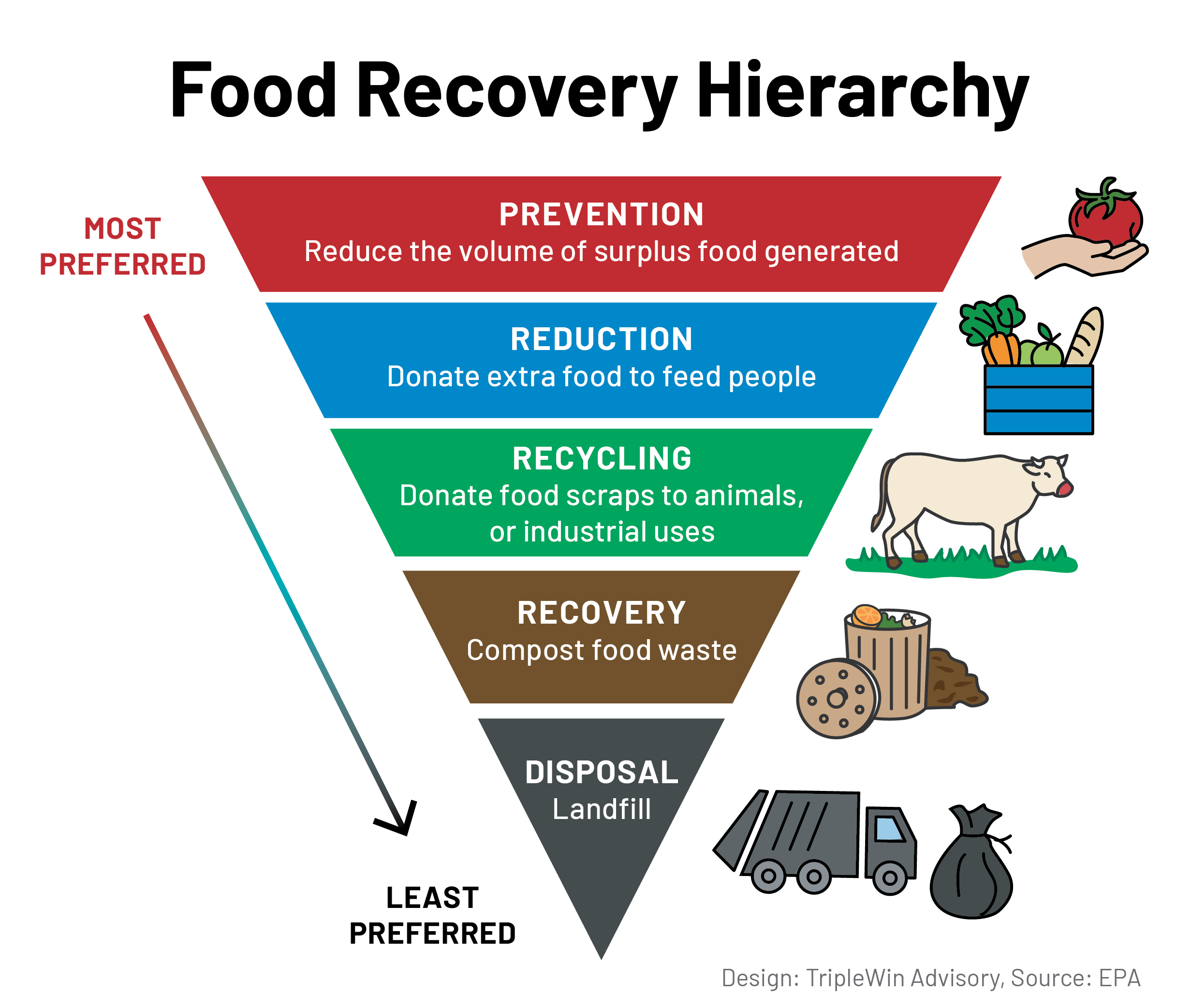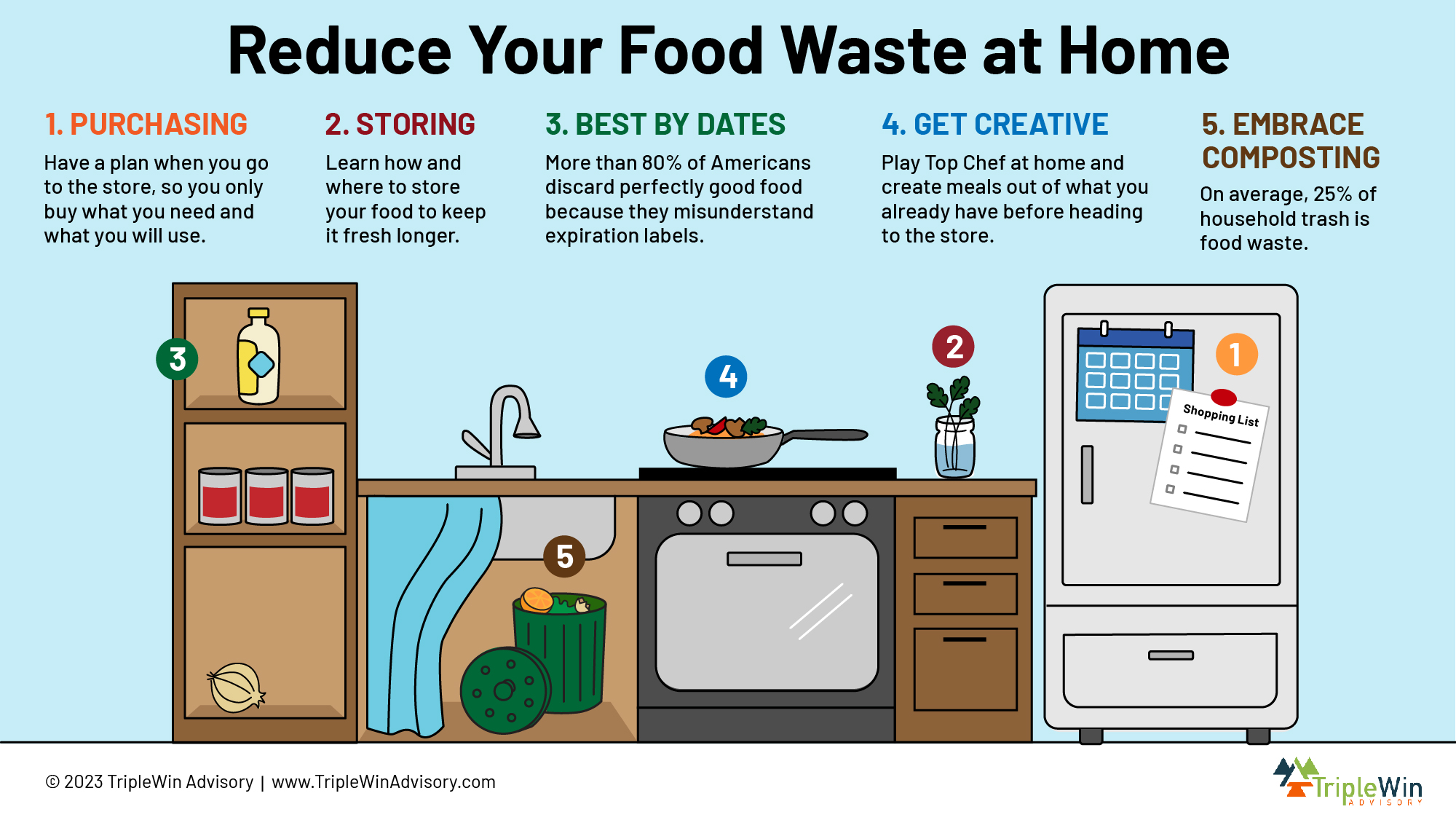
How to Take Food Waste Climate Action at Work and Home (and Why It’s Worth the Effort)
Food waste is a major contributor to carbon emissions globally.
In fact, it is ranked by Project Drawdown as the fourth most important solution for tackling the climate crisis.
Shockingly, nearly 40% of all food produced each year is lost or spoiled before it’s able to be consumed. Solving the 1.3 billion tons of food wasted globally could end world hunger and feed up to 3 billion people!
Cutting global food waste in half by 2030 is a key goal of the United Nations and is reflected in its 17 Sustainable Development Goals (SDGs) for the world through Goal 12: Responsible Consumption and Production. This Goal is focused on combating waste across all points in the food system value chain, including at the retail and consumer levels; along production, transportation, and distribution channels; and at crop harvesting time.
No matter where food is wasted, the resources used to produce that food are squandered as well.
Such resources include land and freshwater to grow the crops, as well as energy, labor, and financial resources to harvest, process, and transport the food to market. To make matters worse, wasted food goes into a landfill—where it rots, emitting 3 billion tons of powerful greenhouse gases each and every year!
It is hard to fathom just how much food is wasted annually. Imagine that all the food that’s wasted in the United States were grown in one place, say on a “mega-farm.” That mega-farm would cover roughly 80 million acres, or over 75% of the entire state of California!

In your business:
Educate your employees on how and why food waste is important so they can take action at every level. Have them watch this Food Waste Education video to learn more about how the minimization of food waste supports climate change mitigation.
Conduct a Food Waste Audit in your organization to see where waste is happening, what actions you can take to reduce waste, and what resources you can leverage to support your goals. Look at every food activity from catering, to your break room leftovers, to waste generated from your procurement practices. Catalog food waste reduction ideas on a spreadsheet and rate them by how easy they are to implement and how meaningful they are in reducing total tons of food waste at your company.
Launch a food waste challenge that leverages the passion and ideas of all your employees. What would that look like? Take a look at this food waste reduction challenge that TripleWin Advisory conducted with Bob’s Red Mill in their manufacturing facility. How can you create something similar and appropriate for your business? Making sure your employees understand why food waste reduction is important is critical to a successful outcome and a continuous improvement mindset. Set a goal for generating ideas and try offering small incentives to keep people engaged and motivated.
Do you have a plan for dealing with leftover usable food? Retailers can look into partnerships such as Too Good To Go. If you are not a retailer, research local shelters to partner with that would gladly take your perfectly edible, leftover food.
Take one more step before the landfill. If you have large-scale food scraps, find a farm that would be happy to use them to support its productive soils or feed livestock. Make composting available and label it clearly. Depending on where you are located in Oregon and what type of business you have, there are these composting services you can use.
In your home:
Everyone can do something to eliminate food waste, no matter who they are or where they live. Use the guide below to incorporate smart food waste reduction strategies at home and with your family.
Purchasing: Have a plan when you go to the store so you only buy what you need and what you’ll use.
Storing: Learn how and where to store your food to keep it fresh longer. You can extend the life of your most perishable products (fresh produce) by following this guide.
Best By Dates: No, you do not have to toss out items on the exact date printed on the label. Learn how to distinguish a food safety’s guidelines. More than 80% of Americans discard perfectly good food because they misunderstand expiration dates. Also, keep your refrigerator and pantry organized so you can see and rotate these items so they don’t get lost.
Get Creative: This is the fun part. Play Top Chef and see what you can create before heading out to the store. Have just a few vegetables rolling around the produce drawer? Make a healthy soup or stir fry before they go bad. You’ll cook more creatively and save money along the way!
Embrace Composting: Cut greenhouse gas emissions by saving those scraps from landfill. If you don’t have curbside composting, see what other options are available to use those scraps to enrich your garden or your community’s soils.

Want to learn more?
This is just a taste of one impact area (Food) that mightily supports the mitigation of climate change. There are other ways businesses and individuals can make changes to support decarbonization, build resiliency, and actualize the sustainable world we want to see. Take a look at the project we worked on with Bob’s Red Mill on reducing food waste in manufacturing.
